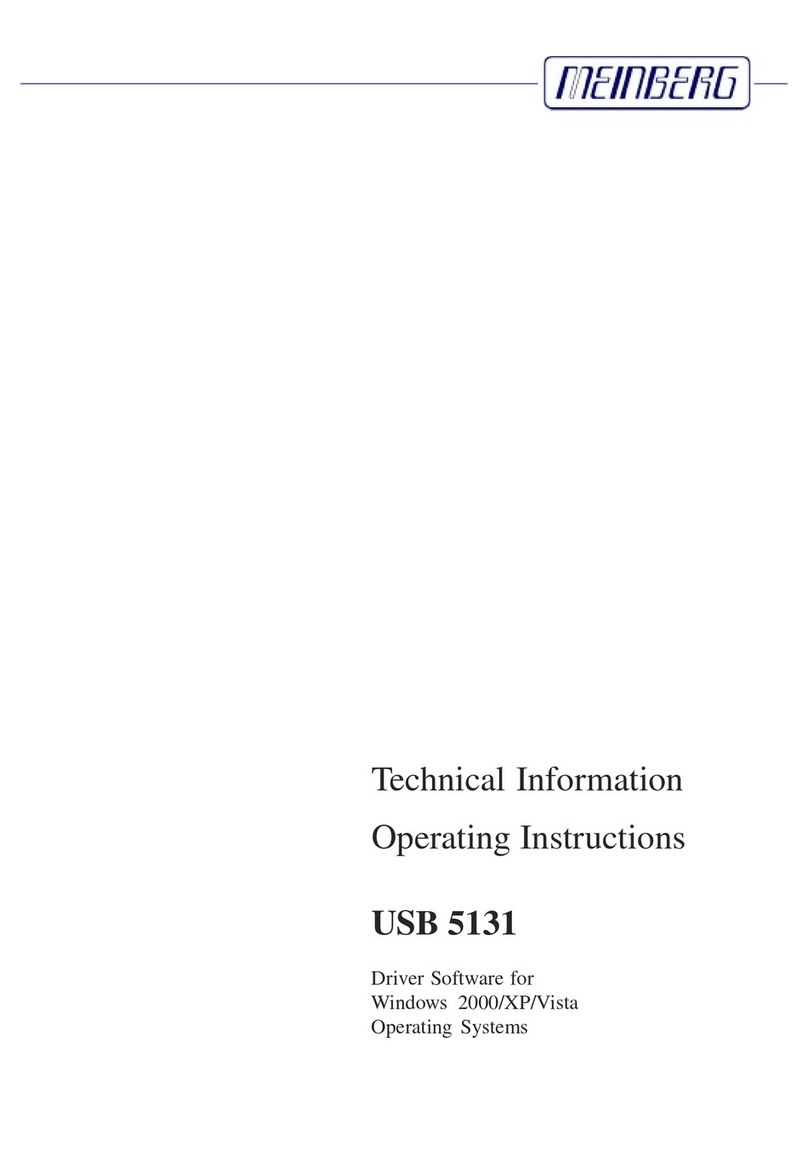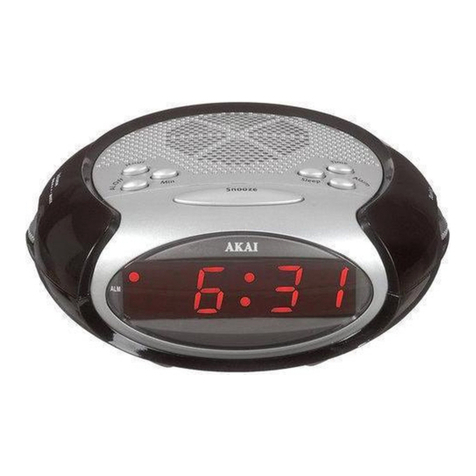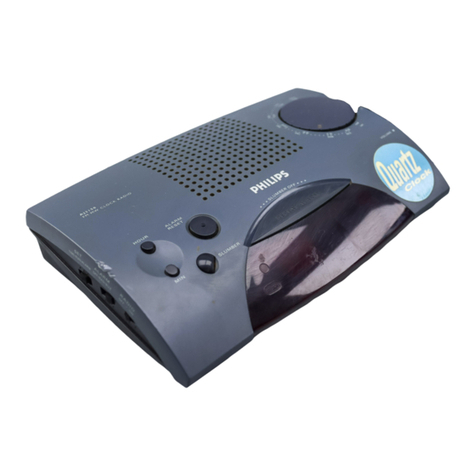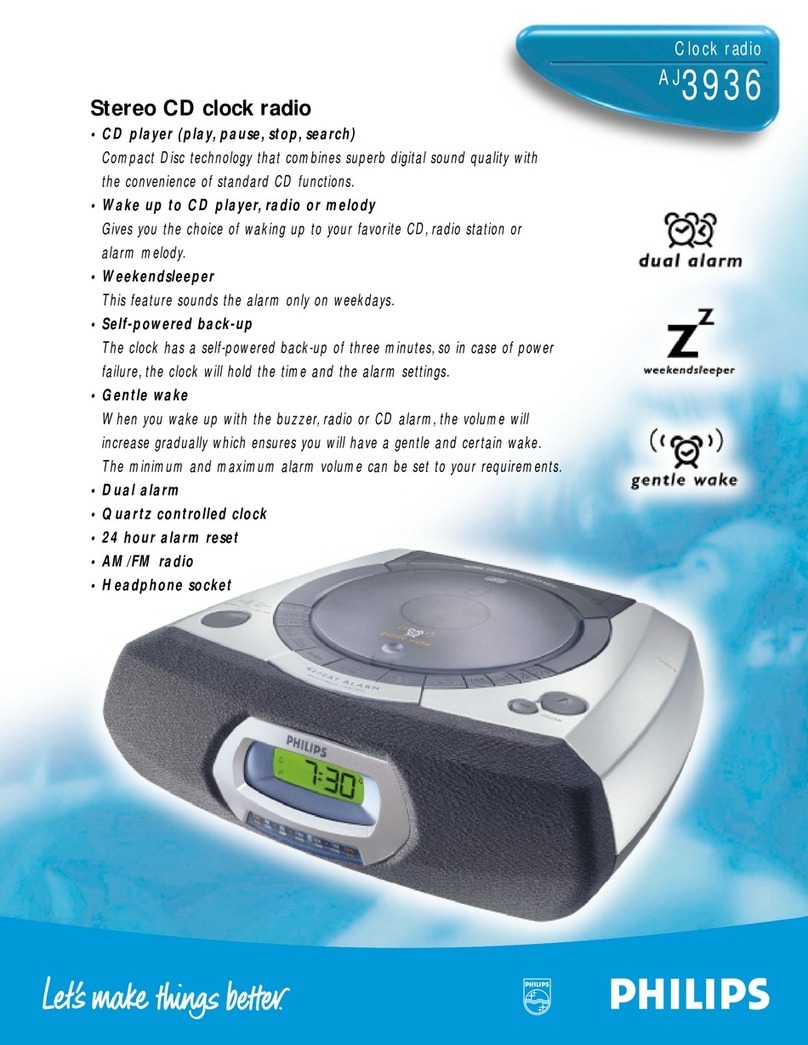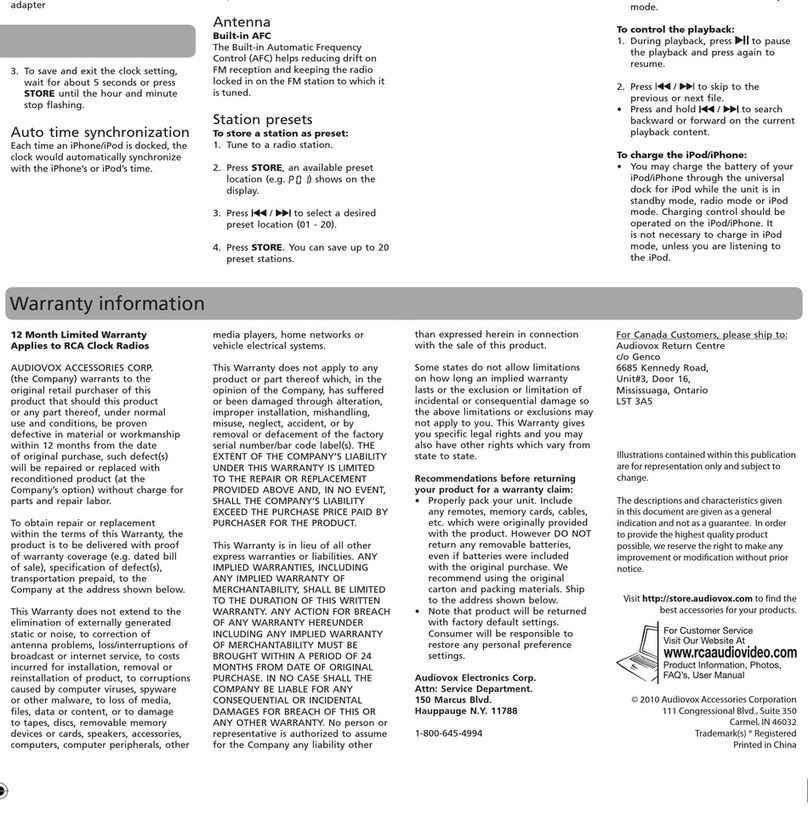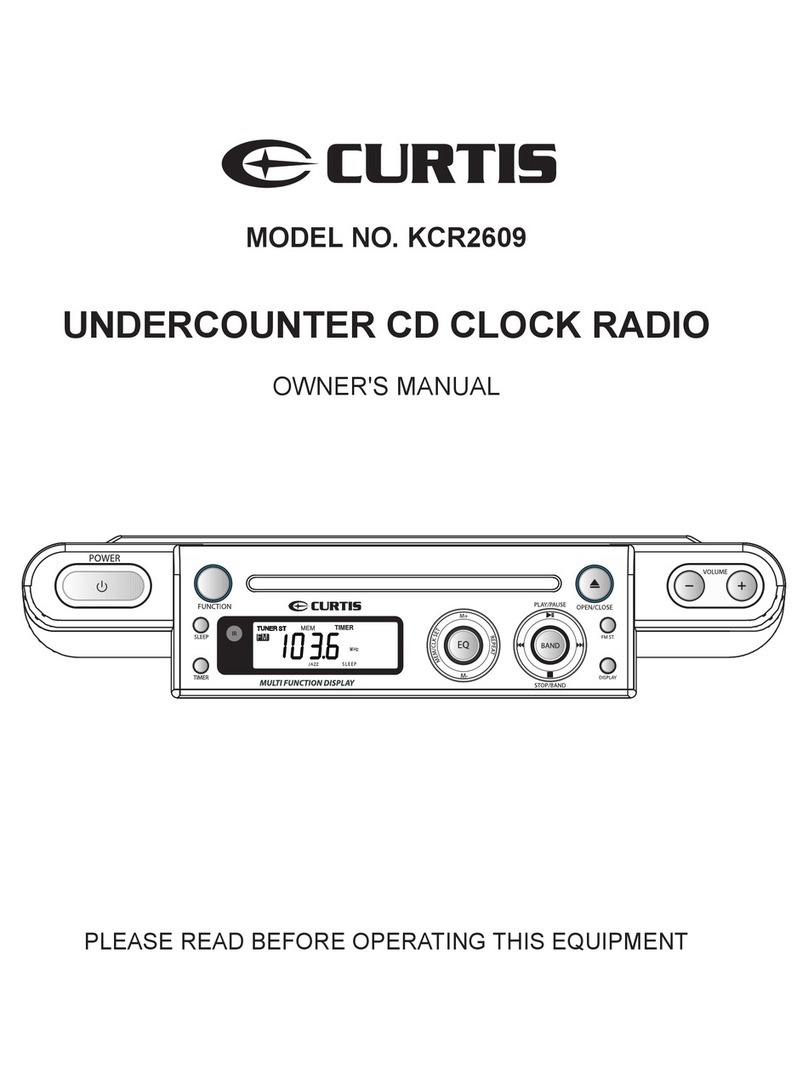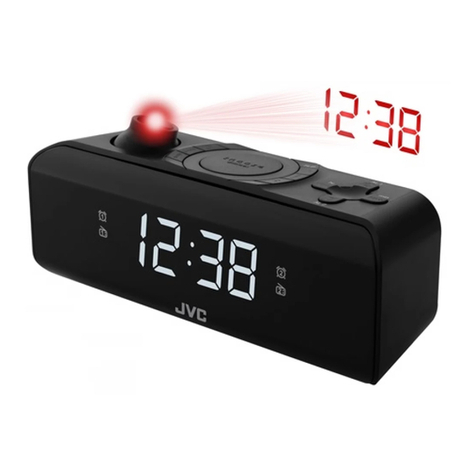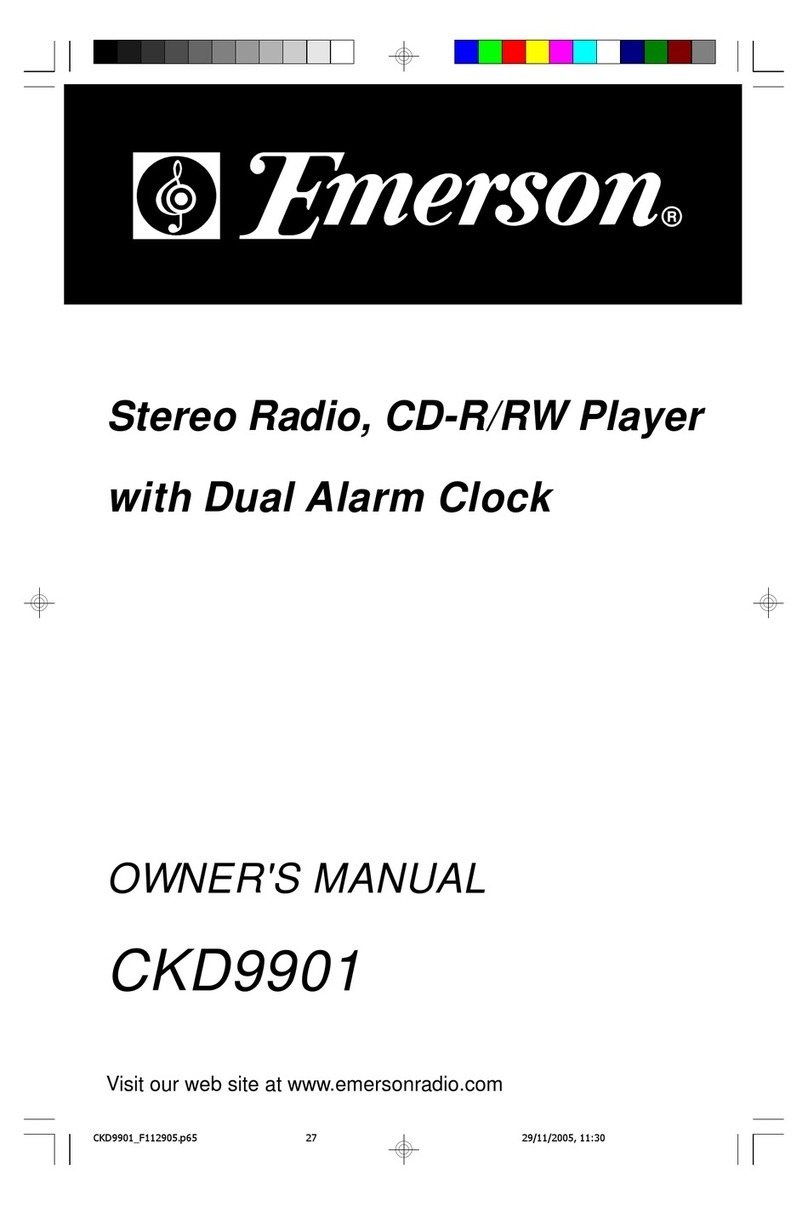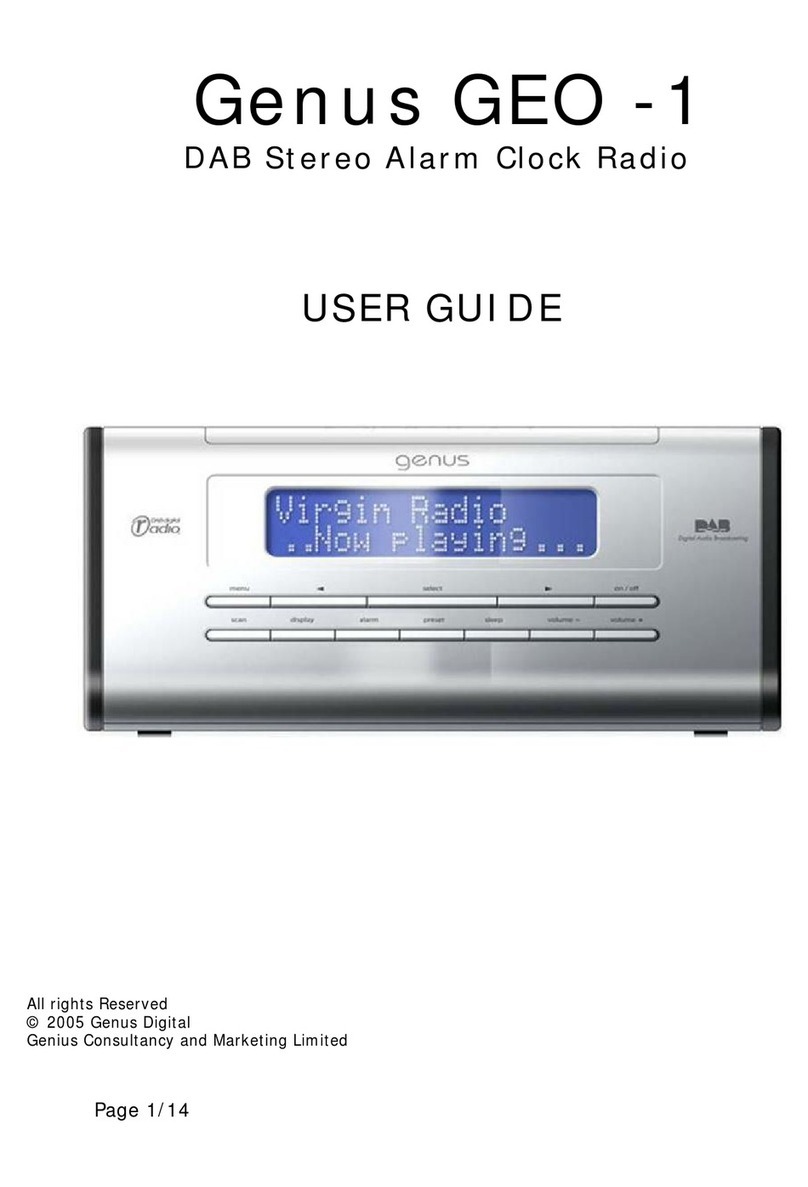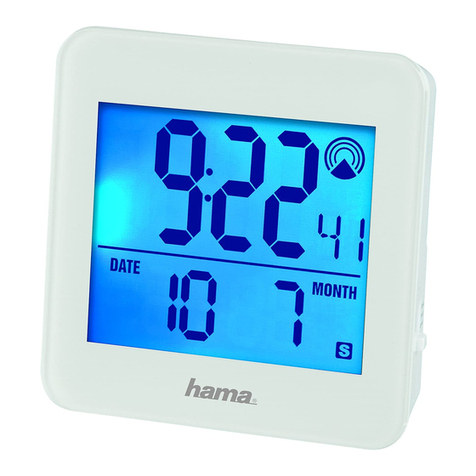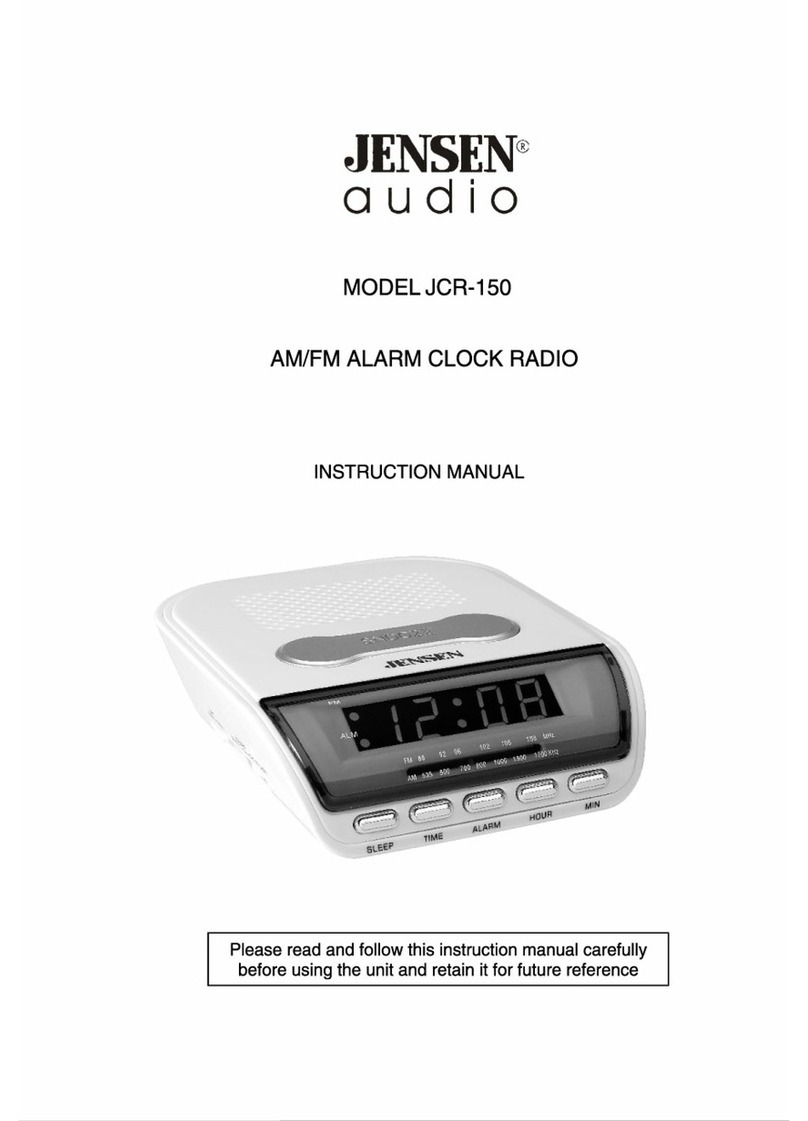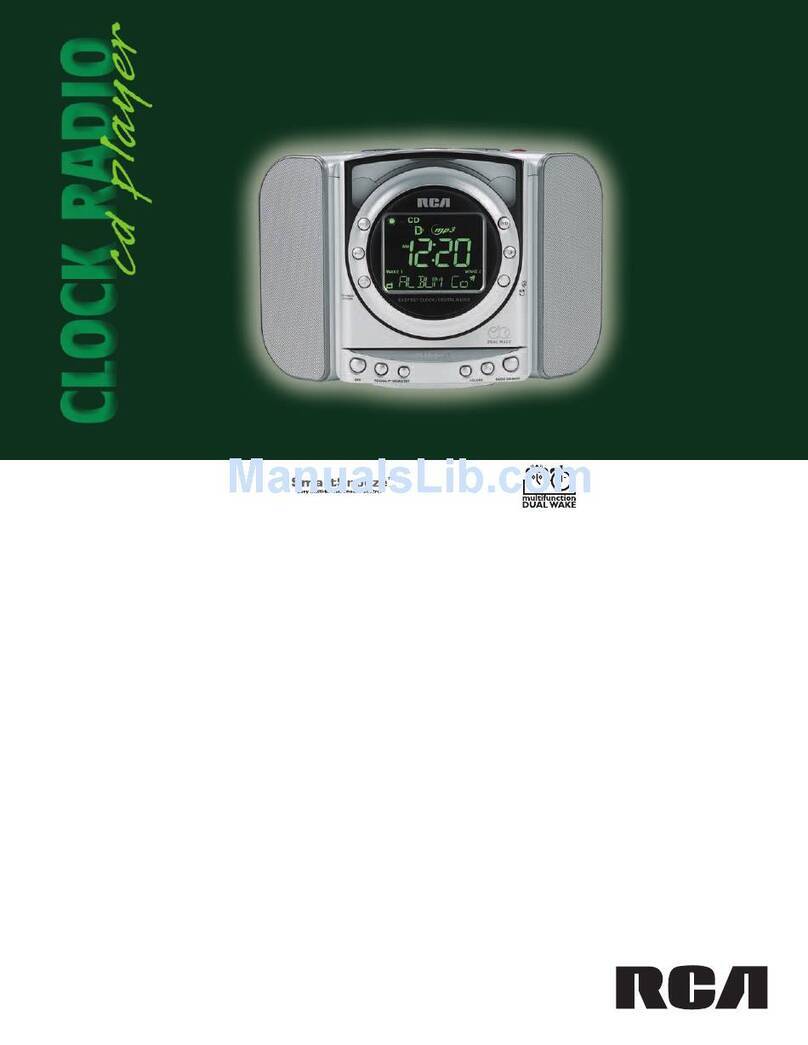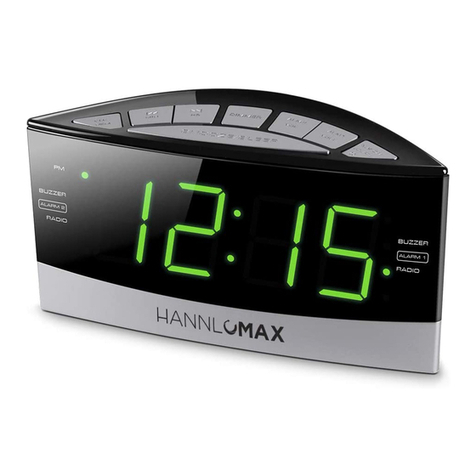Meinberg DCF77 PCI509 User manual

Technical Information
Operating Instructions
FUNKUHREN
DCF77 PCI509

Impressum
Werner Meinberg
Auf der Landwehr 22
D-31812 Bad Pyrmont
Phone: ++49 52 81 - 9309-0
Fax: ++49 52 81 - 9309-30
Internet: http://www.meinberg.de
Email: [email protected]
October 21, 2002

Table of Contents
Impressum ............................................................................................ 2
Driver Diskette for DOS/Windows...................................................... 4
General Information about DCF77 ...................................................... 5
Overview .............................................................................................. 6
Pulse Outputs .............................................................................. 6
Connectors and LEDs in the rear panel...................................... 7
Pin Assignments of the 9 Pin Connector .................................... 8
Installing the PCI509 in your Computer.............................................. 8
Files on the Diskette shipped with the Board ...................................... 9
Support for other Operating Systems................................................... 9
Copying the distributed Software to the Hard Disk........................... 10
Using PCPSINFO.EXE...................................................................... 10
The resident driver for DOS/Windows .............................................. 13
Controlling the Resident Driver ............................................... 14
Technical Specifications .................................................................... 15
Replacing the Lithium Battery ................................................. 17
CE Label ................................................................................... 17
Format of the Meinberg Standard Time String ........................ 18
PCI509 Component Layout ...................................................... 19

4
Driver Diskette for DOS/Windows

5
General Information about DCF77
The radio clocks made by Meinberg receive the signal from the long wave transmitter
DCF77. This long wave transmitter installed in Mainflingen near Frankfurt/Germany
transmits the reference time of the Federal Republic of Germany. This time reference
is either the Central European Time (Mitteleuropäische Zeit, MEZ) or the Central
European Summer Time (Mitteleuropäische Sommerzeit, MESZ). The transmitter is
controlled by the atomic clock plant at the Federal Physical Technical Institute (PTB)
in Braunschweig/Germany and transmits the current time of day, date of month and
day of week in coded second pulses. Once every minute the complete time informati-
on is available.
At the beginning of every second the amplitude of the high precision 77.5 kHz
carrier frequency is lowered by 75% for a period of 0.1 or 0.2 sec. The length of these
time marks represent a binary coding scheme using the short time mark for logical
zeroes and the long time mark for logical ones. The information on the current date
and time as well as some parity and status bits can be decoded from the time marks of
the 15th up to the 58th second every minute. The absence of any time mark at the 59th
second of a minute signals that a new minute will begin with the next time mark.
Our radio clocks decode the highly accurate information on date and time within a
wide range around Germany. So some of our clocks are installed in Bilbao/Spain as
well as in the city of Umeå in northern Sweden - fully satisfying the requirements of
the users. The radio clocks automatically switch to summertime and back. The
reception of the time information is free of charge and does not need to be registered.
Generally it is important to position the antenna in an optimal way. It should be
mounted at least 30 centimeters away from the clock unit and from solid steel. The
antenna should be aligned at a right angle to the direction of the transmitter (Frank-
furt).
Figure: Decoding Scheme
M Start of Minute (0.1 sec)
R RF Transmission via secondary antenna
A1 Announcement of a change in daylight saving
Z1, Z2 Time zone identification
Z1,Z2 = 0,1: Daylight saving disabled
Z1,Z2 = 1,0: Daylight saving enabled
A2 Announcement of a leap second
S Start of time code information (0.2 sec)
P1, P2, P3 Even parity bits

6
Overview
The radio clock PCI509 is designed to operate in computers with PCI bus. An external
ferrit antenna makes the signal from DCF77 available to the on-board long wave
receiver. The demodulated time marks are decoded by the clock´s microprocessor. If
no errors are detected in the current time message an additional plausibility check
against the previous time message is performed. If that plausibility check passes, too,
the buffered real time clock on the board is synchronized corresponding to the
decoded time and date. Optionally, the decoded date and time information can be
converted to another time zone. The time zone setting can be modified using the
monitor program. The current setting is saved permanently on the radio clock board.
Software running on the computer can read out the date/time/status and some more
information. Access to the board is made via writing to/reading from I/O ports. It is
possible but not necessary to let the board generate periodic hardware interrupts on the
computer bus.
Utility programs supplied with the boards include PCPSDRV.COM, a resident
driver (TSR) for DOS/Windows that keeps the computer´s system time synchronous
to the board time and PCPSINFO.EXE, a status display which simplifies installation.
Drivers for OS/2, Windows NT, or NetWare can be ordered separately.
Pulse Outputs
The radio clock PCI509 generates pulses whenever a new second (P_SEC) or a new
minute (P_MIN) begins. The P_SEC pulse is available with TTL level (0/+5V) and
RS-232 level (-3..12V/+3..12V), the P_MIN signal with TTL level only. If required,
DIL switches can be set up to direct each of the pulses to a corresponding pin of the 9
pin connector in the rear panel.

7
Connectors and LEDs in the rear panel
The rear panel includes the antenna connector, three status LEDs, the BSL button, and
a 9 pin sub D connector (see figure below). The LEDs let the user check for proper
receiver operation. The upper, red LED is on if the clock is running on xtal. This LED
can only change when the minute changes (seconds increment from 59 to 0). The
brightness of the LED in the middle depends on the strength of the RF signal. The
lower, green LED should be blinking exactly once
per second corresponding to the time marks from
DCF77. If this LED flashes there is some electrical
noise around which prevents the receiver from
decoding the time marks and synchronizing. All
information given by these LEDs is also available
via the monitor program.
The BSL button behind the hole in the slot cover
activates the clock's boot strap loader if the clock's
firmware shall be updated.
The 9 pin sub D connector is wired to the radio
clock's serial port. Pin assignment can be seen
from the figure beside. This port can not be used
as serial port for the computer. Instead, the clock
uses the port to send out Meinberg's standard time
string in order to control an external display or
some other external device. The string is sent out
once per second, once per minute or if requested
by an incoming ASCII '?'. Is also possible to chan-
ge the radio clock's board time by sending such a
string towards the clock.
Transmission speed, framing, and mode of ope-
ration can be modified using the program PCPS-
INFO. The string format is described in the section
'Technical Specifications' at the end of this manu-
al.

8
PinAssignments of the 9 Pin Connector
When the clock is being shipped, only the signals needed for the serial port are gated
to their pins at the 9 pin connector. If another signal shall be available outside the
computer, the corresponding lever of the DIL switch on the board must be set to the
ON position to connect that signal to its associated pin.
Whenever an additional signal is connected through to the rear panel, special
care must be taken to the configuration of the cable used with the connector. If
pins with TTL level and RS-232 levels are connected to each other, the circuits on
the board may be damaged.
The table below shows the assignments of the 9 pin connector and the correspon-
ding levers of the DIL switch:
Pin Signal SWITCH
1+5V 1
2RxD in (RS-232) --
3TxD out (RS-232) --
4P_MIN out (TTL) 5
5GND --
6(reserved) --
7P_SEC out (RS-232) 3
8P_SEC out (TTL) 4
9(reserved) --
The signals which have no lever of the DIL switch assigned are hard wired to the pins
of the connector. All levers of the DIL switch which are not listed in the table are
reserved and should remain in the OFF position.
Installing the PCI509 in your Computer
Every PCI board is a plug&play board. After power-up, the computer's BIOS assigns
resources like I/O ports and interrupt lines to the board, the user does not need to take
care of the assignments. The programs shipped with the board retrieve the settings
from the BIOS.
The computer has to be turned off and its case must be opened. The radio clock can
be installed in any PCI slot not used yet. The rear plane must be removed before the
board can be carefully plugged in. The computer´s case should be closed again and the
antenna connected to the PCI509´s coaxial plug at its rear. After the computer has
been restarted, the utility PCPSINFO.EXE should be run in order to position the
antenna (see below).

9
Files on the Diskette shipped with the Board
DATEIEN.TXT this list of files in German language
LIESMICH.TXT last changes/modifications in German language
FILES.TXT this list of files in English
README.TXT llast changes/modifications in English
PCPSDRV.COM resident driver (TSR), keeps computer time synchronized with board
time
PCPSINFO.EXE shows the board´s and the TSR's status continuously
PPPSTIME.EXE sets the system time once, does not stay in memory
DRV.EXE temporarily disables the resident driver
DISP.EXE enables or disables the permanent date/time window
POSXY.EXE positions the permanent date/time window on the screen
COLOR.EXE sets the screen attribute of the permanent date/time window
@6AAC.ADF Adapter Description File (required for PS31 only)
Support for other Operating Systems
Drivers for the operating systems listed below are optionally available:
IBM OS/2 v2.1 and above
Novell NetWare v3.11 and above
Microsoft Windows NT v3.51 and above

10
Copying the distributed Software to the Hard Disk
When the computer has come up after power on the utility programs should be copied
from the shipped diskette to a subdirectory on the hard disk. Assume the current drive
is C: and the new subdirectory is to be created on the current drive, create that
subdirectory (e.g. called MEINBERG) using the command
MD \MEINBERG
from the DOS command line. Make the new subdirectory the current one using the
command
CD \MEINBERG
If the utility diskette is inserted in drive A: use the following command to copy the
files and subdirectories from the diskette to the hard disk:
XCOPY A:*.* /S
Using PCPSINFO.EXE
After the board has been installed in the computer the program PCPSINFO.EXE
should be run in order to see if the board has been properly installed. This program can
display its messages in English or in German language and the date and time in
formats used in the USA, the UK, or Germany. The default language and formats used
are derived from the DOS country code at startup. If automatic language detection
does not yield the desired result, you can force a language and date/time format using
a command line parameter or by pressing a function key when the program is running.
The command syntax is shown below:
PCPSINFO [C:xx] [MONO] [?]
Usage of the command line parameters is described below:
C:xx Country code override. The default country code to be used is derived from the COUN-
TRY=.... entry in the CONFIG.SYS file.
xx may be set to 49 (Germany, 24h clock, dd.mm.yy), 44 (U.K, 12h clock, dd/mm/yy)
or 1 (USA, 12h clock, mm-dd-yy).

11
MONO Force monochrome display even if color display installed. May increase the readabi-
lity on LC displays often used with laptops.
?Displays a message how to setup port address and how to use the program. Output
can be redirected to printer ( append ">LPT1" to the command line) or file (append
">filename").
All the command line parameters are optional. In most cases the program is started
simply by entering PCPSINFO. If the board can installed successfully, the screen
displays information similar to figure shown below:
The upper part of the screen shows information about the resident driver (if the driver
has been installed). These information include the ID string of the resident driver
with the driver revision number, the number of the software interrupt used to
control the resident driver and the last recent date/time the driver has read from the
board. The number of the user interrupt is determined automatically when the resident
driver is installed. It is not affected by the hardware interrupt configured by jumpers.
The BUSY flag controls the driver´s right to access the board. If the flag is set to
OFF the driver is allowed to access the board, if it is ON, access is inhibited. This flag
can be changed from the command line using the utility DRV.EXE or by pressing the
key B in PCPSINFO. The flag DISP affects the resident driver´s feature displaying
the permanent date/time window on the screen (upper right corner in the screenshot
above). It can be altered using the utility DISP.EXE from the command line or by
pressing the key D. The flag Set RTC direct enables the driver to write directly to the
computer´s real time clock. This feature is required in some special environments
only; see the description of PCPSDRV.COM below. The Tick Counter counts the

12
times the driver has been activated by the computer´s periodic timer tick interrupt. If
this counter is down to zero, the computer´s system time is set and the counter is
reloaded to the Tick Reload value. The tick reload is derived from the update cycle
parameter given in the command line when PCPSDRV.COM is installed. The system
timer generates 18.2 interrupt per second, so the reload value in the figure above (182)
corresponds to an update cycle of 10 seconds.
The lower part of the screen gives information about the board installed in the
computer: The Eprom´s ID string, the serial number and type of the board and the
port addresses used by the radio clock. The field labeled Serial: shows transmission
speed, framing and mode of operation which have been configured for the radio
clock´s serial interface. The serial interface transmits the date/time/status string
known from other Meinberg radio clocks.
The field labeled Date/Time: displays the radio clock's current date and time. The
line Last Sync: shows the time last synchronization has been achieved. If the clock
can receive the time signal without errors this field is updated once every minute.
The board´s current state is shown in the field Status:.The first line shows whether
the clock has ever been synchronized with DCF77 since the last power-up or board
reset. If there are transient distortions the clock can be temporarily running on XTAL
for some minutes which is indicated by the second line. The third line indicates
whether daylight saving is currently in effect or not.
The signal bar is useful to install the antenna. For best results the antenna should be
mounted at least 1 meter from the computer and from solid metal parts. The length of
the bar is derived from the receiver´s AGC voltage. Because this voltage is limited
with a strong signal, the best way to align the antenna is to turn it slowly until the bar
shows minimum signal, then turn it exactly by 90 degrees to yield the maximum
signal.
Exact time marks are much more important than a long signal bar, so the small field
labeled Mod: reflects the time marks demodulated from the RF signal. This indicator
should blink exactly once per second without intermediate flashes. Pressing the key F2
enables the computer´s speaker whenever the Mod: field is on.
If the key F3 is pressed, the Setup menu is displayed which lets the user modify
some configuration parameters. Depending on the features of the clock it is possible to
change the radio clock's date, time, and time zone, the serial port parameters, or some
options which are used with GPS clocks only.
Pressing both the keys Alt and Xsimultanously lets this program terminate.

13
The resident driver for DOS/Windows
The resident driver PCPSDRV.COM runs with DOS version 2.11 or greater and
Windows 3.x. It uses only about 1500 bytes of memory and periodically synchronizes
the computer´s system time to the board time. Additionally, the driver is able to
display the board´s time continuously in a window on the text screen. This feature can
be enabled and controlled by some of the utility programs (see next chapter).
In order to avoid conflicts accessing the board the driver should not be installed or
be temporarily disabled using the utility DRV.EXE if user-written software accesses
the board.
If the driver has to be installed every boot time, it should be called from the
AUTOEXEC.BAT which should reside in the root directory of the boot drive. Assu-
ming the driver file can be found in the directory MEINBERG on drive C:, a
command line like that shown below should be added to the AUTOEXEC.BAT using
any text editor:
C:\MEINBERG\PCPSDRV [U:xxxx] [I] [R]
The optional parameter U:xxxx can be used to set the time span to be used for the
periodical update of the system time. Valid numbers for xxxx are 1 to 3600 (seconds).
If this parameter is omitted the time span defaults to 1800 seconds (= 30 minutes).
The parameter Imust be given in the command line if the driver shall modify the
computer´s time just after being installed. In the default case the computer´s system
time will only be modified when the clock has synchronized at least once after power-
up (Status: Synchronized after last Reset). If the clock has to work in an electrically
noisy environment or with very low RF signal it can´t synchronize very often and it
could be recommended that the computer´s time is synchronized with the PC32´s time
before the clock has synchronized with DCF77 (the PC32 offers a more exact time
than the computer´s system time even when running on XTAL).
The last parameter Rtells the resident driver to set the real time clock in AT
compatible computers directly. This is only required if the DOS/BIOS interrupts
which modify the computer´s time are redirected by other applications as on Novell
Netware 2.xx file servers. In the default case this parameter should not be used in
order to minimize the execution time of the resident driver.

14
If the file AUTOEXEC.BAT does not exist in the root directory yet it can be created
using any text editor software or entering the sequence of commands below:
COPY CON: AUTOEXEC.BAT
C:\MEINBERG\PCPSDRV U:10 I
^Z
^Z: Press the keys “CTRL” and “Z” simultaneously.
The command line of the example above installs the driver using the default I/O port
base of 300h. The computer´s system time will be corrected every ten seconds even if
the clock has not synchronized with DCF77.
Controlling the Resident Driver
If the resident driver PCPSDRV.COM has been installed, some of the utility pro-
grams can be used to control the way it works. The programs described below show a
few help lines when they are called without command line parameters.
DRV.EXE temporarily disables the resident driver´s access to the board.
Command: DRV ON or DRV OFF
Default: enabled
DISP.EXE enables or disables the date/time window on the screen.
Command: DISP ON or DISP OFF
Default: disabled
COLOR.EXE sets up the screen attribute of the date/time window
Command: COLOR fg bg
with fg and bg the color numbers of the foreground/back-
ground
Default: white characters on black
POSXY.EXE sets up the screen position of the date/time window.
Command: POSXY column row
Default: upper right corner of the screen
Using these utilities, you can enable or disable the date/time window only when
special applications are run.

15
Technical Specifications
RECEIVER: Direct conversion quadrature receiver with automatic gain
control
Bandwidth: approx. 20Hz
ANTENNA: Active external ferrite antenna in a plastic case
Length of the cable: up to more than 100m
Standard:
BNC type connector, 5m of RG174 cable
Outdoor:
N type connector, RG58 cable
RF AMPLITUDE,
MODULATION: Indicated by LED and on-screen by utility program
TIMECODE
CHECK: Parity and consistency checking over a period of two minutes
RF distortions indicated by both LED and a bit of the
status register
Without RF signal the clock runs on XTAL
with an accuracy of 10-6 (after 1 day of synchronization)
BATTERY
BACKUP: Lithium battery or Gold Cap
when the computer is turned off, the on-board RTC keeps the
time based on XTAL for more than 10 years (lithium battery)
rsp. 150 hours (gold cap)
RELIABILITY OF
OPERATION: Microprocessor supervisory circuit provides watchdog timer,
power supply monitoring and backup-battery switchover
SYSTEM BUS
INTERFACE: compatible to PCI specifications

16
CONFIGURABLE
TIME ZONES: Central European Time CET/CEST (default), always CET (no
daylight saving time), UTC, East European Time EET/EEST
(CET/CEST + 1h)
SERIAL
INTERFACE: Transmission Speed: 300 through 9600 Baud
Framing: 8N1, 7E2, 8N2, or 8E1
Mode of Operation: send string per second, per minute,
after request ´?´ received
Output String: Meinberg standard time string
(described below)
POWER
REQUIREMENT: +5V @ 80mA
PHYSICAL
DIMENSION: short PCI expansion board
AMBIENT
TEMPERATURE: 0 ... 70°C
HUMIDITY: max. 85 %

17
Replacing the Lithium Battery
The life time of the lithium battery on the board is at least 10 years. If the need arises
to replace the battery, the following should be noted:
ATTENTION!
Danger of explosion in case of inadequate replacement of
the lithium battery. Only identical batteries or batteries
recommended by the manufacturer must be used for
replacement.The waste battery must be disposed as pro-
posed by the manufacturer of the battery.
CE Label
This device conforms to the directive 89/336/EWG on the approxi-
mation of the laws of the Member States of the European Communi-
ty relating to electromagnetc compatibility.

18
Format of the Meinberg StandardTime String
The Meinberg Standard Time String is a sequence of 32 ASCII characters starting
with the STX (start-of-text) character and ending with the ETX (end-of-text) charac-
ter. The format is:
<STX>D:dd.mm.yy;T:w;U:hh.mm.ss;uvxy<ETX>
The letters printed in italics are replaced by ASCII numbers whereas the other
characters are part of the time string. The groups of characters as defined below:
<STX> Start-Of-Text (ASCII code 02h)
dd.mm.yy the current date:
dd day of month (01..31)
mm month (01..12)
yy year of the century (00..99)
wthe day of the week (1..7, 1 = Monday)
hh.mm.ss the current time:
hh hours (00..23)
mm minutes (00..59)
ss seconds (00..59, or 60 while leap second)
uv clock status characters:
u: ‘#’ clock has not synchronized after reset
‘ ‘ (space, 20h) clock has synchronized after reset
v: different for DCF77 or GPS receivers:
‘*’ DCF77 clock currently runs on XTAL
GPS receiver has not checked its position
‘ ‘ (space, 20h) DCF77 clock is sync'd with transmitter
GPS receiver has determined its position
xtime zone indicator:
‘U’ UTC Universal Time Coordinated, formerly GMT
‘ ‘ MEZ European Standard Time, daylight saving disabled
‘S’ MESZ European Summertime, daylight saving enabled
yanouncement of discontinuity of time, enabled during last hour
before discontinuity comes in effect:
‘!’ announcement of start or end of daylight saving time
‘A’ announcement of leap second insertion
‘ ‘ (space, 20h) nothing announced
<ETX> End-Of-Text (ASCII code 03h)

19
PCI509 Component Layout

Table of contents
Other Meinberg Clock Radio manuals
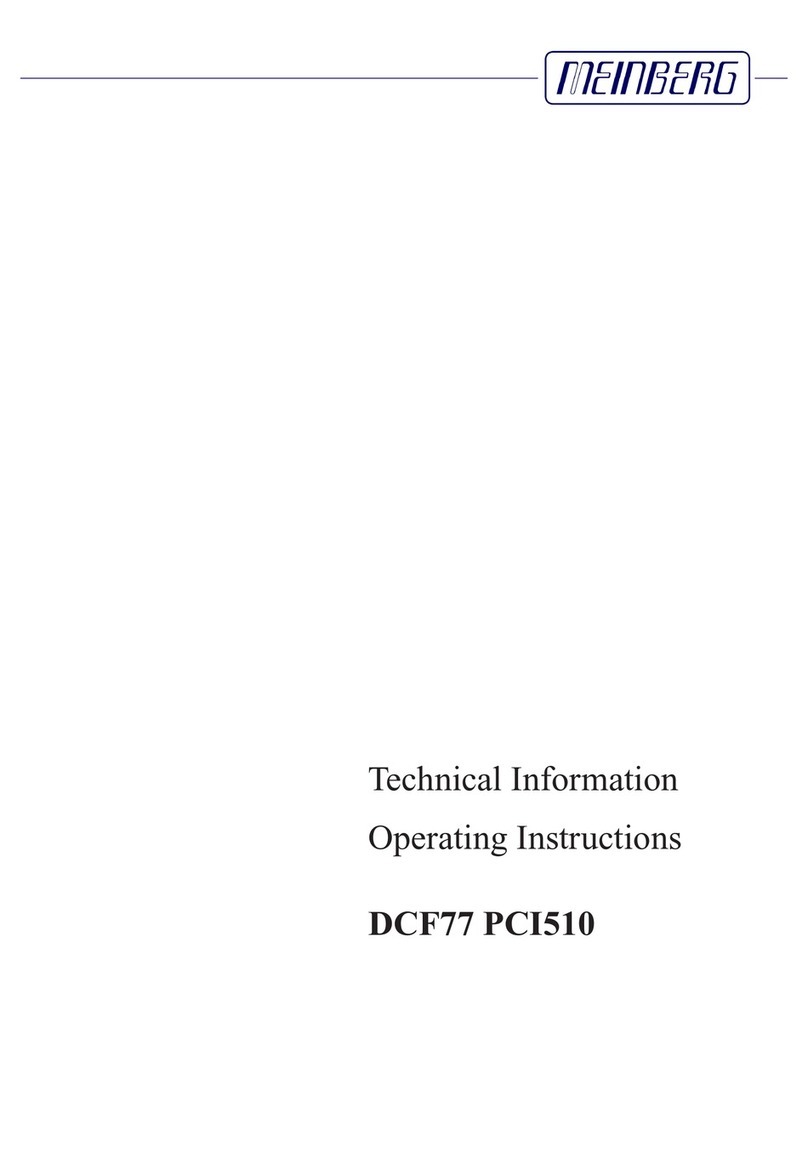
Meinberg
Meinberg DCF77 PCI510 User manual
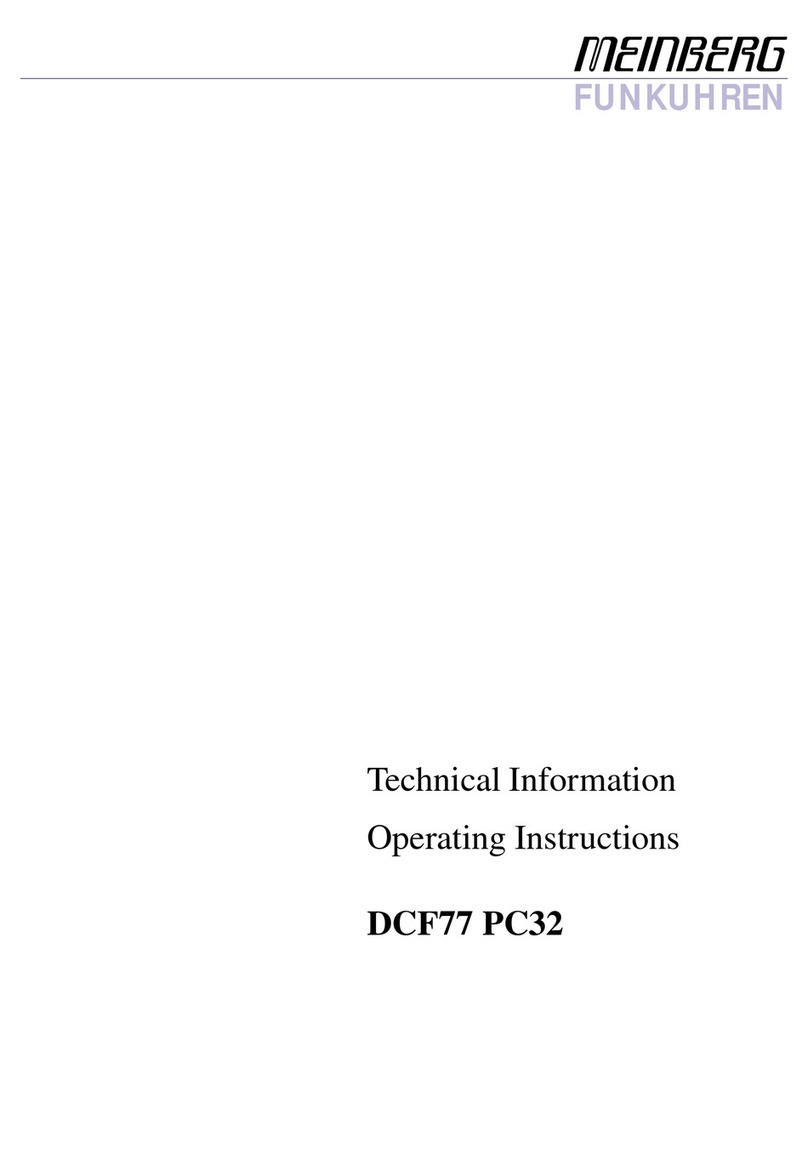
Meinberg
Meinberg DCF77 PC32 User manual
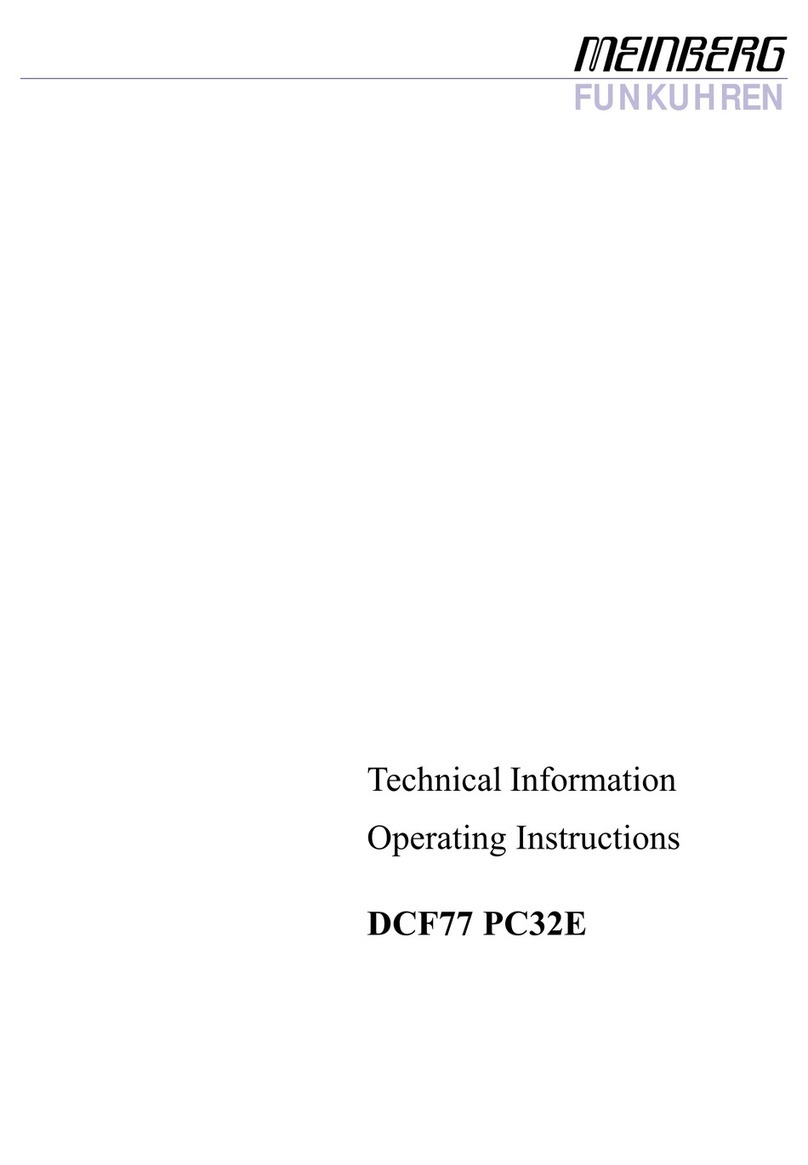
Meinberg
Meinberg DCF77 PC32E User manual

Meinberg
Meinberg DCF77 PCI32 User manual

Meinberg
Meinberg USB 5131 User manual

Meinberg
Meinberg UA32S User manual

Meinberg
Meinberg ANZ14 User manual

Meinberg
Meinberg DCF77 UA509 User manual
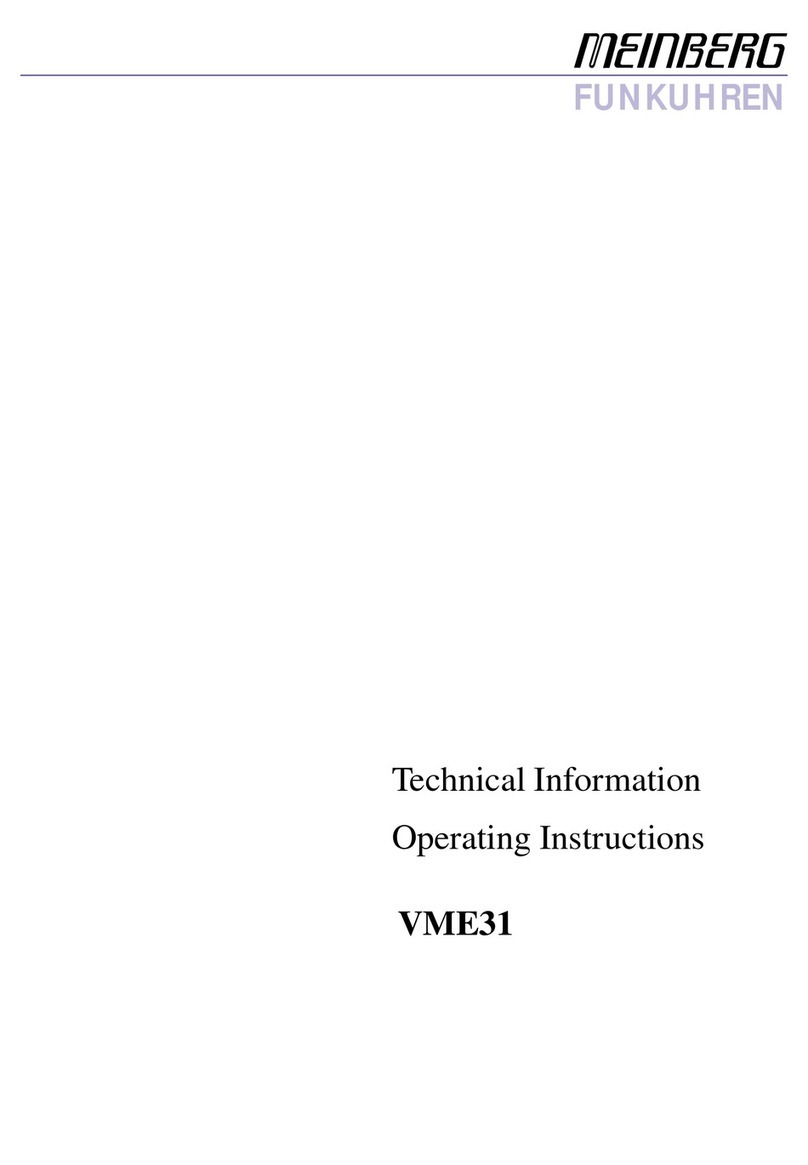
Meinberg
Meinberg VME31 User manual
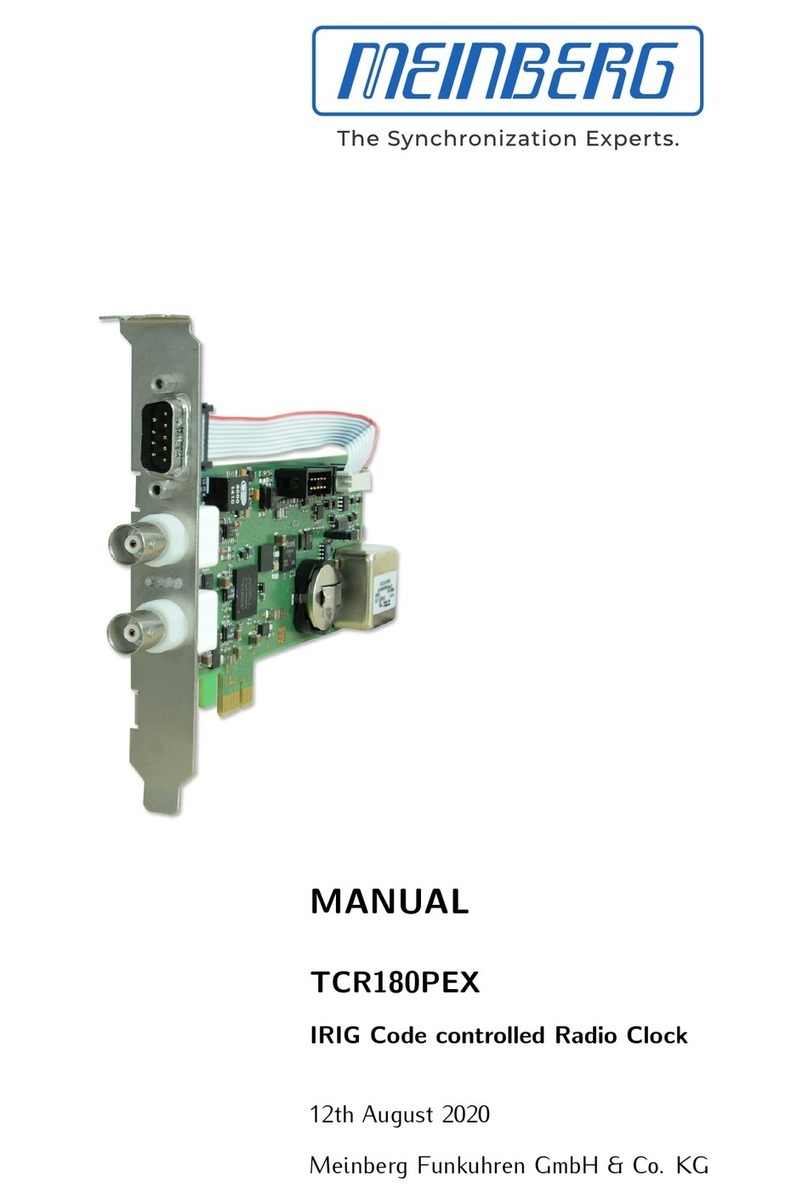
Meinberg
Meinberg TCR180PEX User manual
